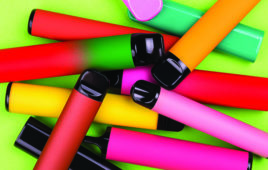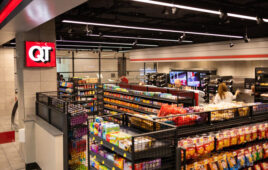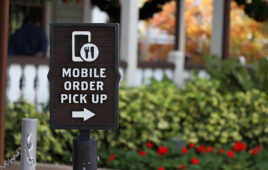 Technology is playing a larger role in convenience store foodservice today with online and app-based menus, order-ahead capabilities and delivery continuing to accelerate.
Technology is playing a larger role in convenience store foodservice today with online and app-based menus, order-ahead capabilities and delivery continuing to accelerate.
Largely due to COVID-19, the entire limited-service segment is increasingly moving towards order-ahead technology, stated Mike Kostyo, trendologist with Datassential research firm. According to Datassential’s 2021 “C-Store Foodservice Keynote Report,” 41% of convenience store customers say they want the order-ahead option, and that number increases for younger customers.
Consumers are also increasingly relying on delivery to fulfill their foodservice orders.
“In Datassential’s 2021 ‘Annual Trends Report,’ 90% of consumers changed their delivery behavior because of COVID, and the vast majority increased their delivery usage,” he explained.
Before adding order-ahead and delivery options, retailers should make sure they have a sufficient digital infrastructure to take in and process the orders and a place to store the orders for pickup.
Currently, the Keynote Report found, only about 13% of convenience stores offer foodservice delivery.
A singular opportunity for c-stores is the option for consumers to combine foodservice and a wide range of retail products in a single delivery order, which most foodservice operators cannot match, Kostyo suggested. The caveat for retailers is that consumers almost universally agreed in Datassential’s 2020 “Food @ Home Keynote Report” that the food they receive should be of the same quality they would get in the foodservice operation itself.
In the “Food @ Home Keynote Report,” operators identified the cost of using third-party delivery services such as Grubhub as the biggest pain point, he said. Another concern is that operators lose control over the final product once it is picked up by the third-party delivery driver.
A third technological advance that is making inroads in the quick-service sector and may have applications for c-stores is subscription programs, Kostyo continued. Most of these programs charge a monthly price for an unlimited or set number of food or beverage items.
The key opportunity with a subscription program is upselling additional items to the consumer.
“The consumer stops in for that cup of coffee each morning and adds a doughnut or breakfast sandwich to their order, or they see their gas is a little low and fill up at the pump,” he explained. “If you give the consumer a great brand experience, you can also turn that new habit into long-term brand loyalty.”
Kostyo noted that although subscription programs in foodservice are not yet common, Datassential’s “Five in Five Focus Report: Subscription Models 2021” found that “a whopping 60% of consumers” say they are interested in lunch or dinner subscription options.
 Introducing Order-Ahead
Introducing Order-Ahead
For its new quick-service fresh Mexican restaurant concept Tic Tac Taco, which debuted eight months ago inside two of its Ohio stores with big plans for future expansion, Duchess convenience stores included mobile order-ahead and delivery via DoorDash options. To date, about 10-15% of orders each day come in through the order-ahead system, according to Nathan Arnold, marketing director for the chain, which has 119 stores in Ohio and West Virginia.
Customers can order through the Duchess website or app. Arnold pointed out that the order-ahead and delivery options have helped the c-store tap into new markets.
“We see offices placing group orders for pickup and delivery,” he said. “Within the next couple of months, we plan to offer catering over our mobile app.”
To determine what packaging would assure that their foods would maintain their just-made integrity, Duchess management ordered delivery from numerous foodservice establishments — including their own. Some tinkering with their existing packaging materials yielded the best fit for their needs.
Most of the mobile and delivery orders are for multiple items, Arnold noted. Instead of one entrée, they usually consist of two, three or four.
There’s no doubt delivery and order-ahead options will slow down somewhat as consumers get back to their normal routines again, but overall, they will be at much higher levels than we saw prior to the pandemic for the long-term, Kostyo said.
“When you look at how much younger consumers love options like delivery and order-ahead technology … it’s clear that these options are the future,” he concluded.




